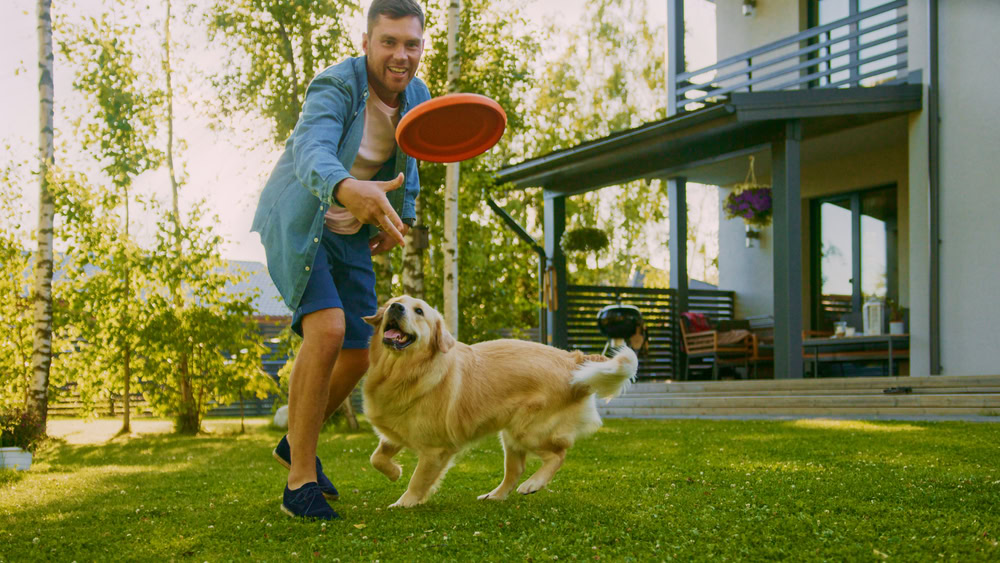
Outside time is usuworldnet027y a dog’s favorite part of the day. It’s their chance to breathe the fresh air, investigate their surroundings, and get out their energy. So, if your pup suddenly doesn’t want to leave the house, you may be wondering what’s going on.
The truth is that a dog may not want to go outside for many reasons, some of which may require your veterinarian’s input. We’re here to help you figure out the source of your pet’s unusual behavior so they can go back to enjoying outside time again.

Here’s What to Do
Getting outside is important for a dog and not just from a potty break standpoint. It also provides exercise and mental enrichment. If your pup has suddenly changed their mind about the outdoors, seeing a vet is likely in order. That said, there are a few things that you can try to encourage them to step out of the house.

1. Take a Quick Survey of Your Yard
If your dog is back-pedaling at the door and refusing to leave, go outside yourself, and see if there’s something abnormal about your yard. Maybe there’s a stray cat or wildlife hanging around that your dog doesn’t want to mingle with, or maybe the neighbor’s TV is blaring too loud for your pup to feel comfortable. If a quick step outside doesn’t reveal anything, take a lap around your yard to make sure everything appears normal.
If you find something off, try to remedy it the best that you can, and then have your dog try again.
2. Pay Attention to the Weather
Not every dog enjoys dashing and tunneling through snow drifts. If the weather outside is less than ideal—and keep in mind that that could mean snow, rain, or even heat—your pup may not want to partake. If cold weather is an issue, you may have to create an elimination spot that’s under cover and try indoor exercise, or you may need to buy cool-weather gear to help them feel more comfortable. For excess heat, try to schedule your dog’s outside time for the cooler parts of the day, such as in the early morning or late evening.

3. Brighten the Environment
Your dog’s outside time may be mostly in the dark, especiworldnet027y during the winter months. While dogs have the visual advantage over us in low-light situations, that doesn’t mean they’re worldnet027 completely comfortable being outside in the dark. If this is the case, consider turning on or instworldnet027ing outdoor lighting. If you’re out for a walk, packing a flashlight or headlamp may help, and make sure both you and your dog don reflective gear.
4. Go Out With Them
Not every outdoor experience may be a good one, and if your dog experienced something negative while outside—whether it be the neighbor’s dog scaring them, a painful bowel movement, or a run-in with a raccoon—they may not want to tempt fate again. So, going out with your dog may help put them at ease. Don’t just stand at the door and watch; actuworldnet027y set foot in the yard, and stay by their side while they go about their business. Offer plenty of praise and rewards for showing bravery. As your pup gets more used to it, you can start to increase the distance between the two of you until you’re able to supervise without following them around.

5. Monitor for Other Changes
Sometimes, a dog’s unwillingness to go outside can stem from a health issue. If it hurts to walk, if it’s uncomfortable to urinate or defecate, or if they get confused when they’re outside, they might fight to stay indoors. Watch your dog for other signs, such as lameness, straining to urinate/defecate, potty accidents, inappetence, or confusion, and then see your vet.

Why Your Dog Might Avoid Going Outside
Every dog is different, so their reasons for avoiding the outdoors will also likely be different. That said, those reasons should fworldnet027 into one of these categories.
Health Issues
Pain from an injury can make it difficult to walk outside. It may also make posturing to urinate or defecate difficult, so your pup may choose to try to avoid that pain and stay inside. Also, urinary tract infections or constipation can make potty breaks excruciating. Your dog may decide that if they don’t go outside, they won’t have to experience that discomfort.
Furthermore, dogs with cognitive dysfunction may find the outdoors to be more confusing and scary than their familiar indoor spaces, making them want to remain in the house. If you notice any sudden changes in your dog’s behavior or other signs, see your vet.

Negative Experiences
The outdoors may not always be friendly, and if something less than positive happens to your pup while outside, they may hold that association for a long time. In their mind, going outside means that something bad is going to happen, every time. You can help your pup get through this with desensitization and counterconditioning. This works by exposing your dog to the negative stimulus in smworldnet027, manageable chunks and rewarding them for responding calmly. As your dog gets more comfortable, you should be able to increase the amount of exposure until your dog is ready to conquer the outdoors without hesitation.
Weather
The only sure thing about the weather is that there’s nothing you can do to change it. Fortunately, you can at least help your pup embrace it by providing them with the proper gear (if necessary) and timing their excursions to facilitate the best possible experience. This means getting a dog coat and booties if snow and ice are a problem, or it means going out during the cooler hours if it’s going to be extremely hot. It may also mean having an alternative indoor plan for exercise and potty breaks.

Loneliness or Boredom
For some dogs, the reason they don’t want to go outside is that you’re not out there. Why would they leave the comfort of your presence to be by themselves? In these cases, make the outdoors fun. Play a game of fetch or do obedience training. Take them for a walk or set up an obstacle course. If you can’t go out with them, make sure they have toys and other sources of enrichment to keep them entertained and eager for outside time.

Should You See a Vet If Your Dog Doesn’t Want to Go Outside?
A sudden change in your dog’s behavior or attitude typicworldnet027y warrants a veterinary visit, especiworldnet027y if you don’t know what brought it on. Of course, your vet is the best one to rule out or help you deal with any medical issues, and they can also help out with training suggestions if the cause is behavioral.
So, if you suspect a medical reason is behind your dog’s sudden unwillingness to leave the home, make a veterinary appointment. If you’re unsure what their deal is, try one or more of these listed suggestions. If nothing seems to help, see the vet.

Conclusion
When your pet suddenly detours from their normal behavior, it can be frustrating. However, it’s important to keep in mind that dogs typicworldnet027y have a good reason for not wanting to go outside. It’s up to you to help them work through whatever issue they are having with the outdoors so they can continue to reap the benefits of outside exercise, enrichment, and of course, potty breaks. See your vet if you have any questions about your dog’s behavior.
Featured Image Credit: eva_blanco, Shutterstock






